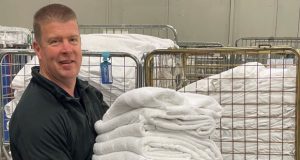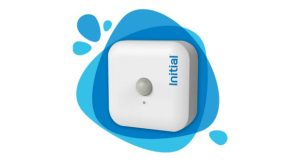According to the Chinese zodiac, 2020 celebrates the year of the rat. While they are honoured for their spirit and wit in the zodiac, rats can present hygiene issues when they come in contact with people.
Preventing rodent activity must be top of mind for facilities managers, especially those premises involved in food handling, in the winter months because of the annual rodent migration indoors. Rats and mice are attracted to buildings where there’s warmth, water and food in abundance. They will often enter buildings through damaged drains or by gnawing through the smallest entry point. Mice can even fit through a hole that’s as small as the width of a biro.
Facilities managers need to be particularly vigilant this winter. Recent Rentokil data suggests that the cold and flooding experienced in large parts of the country could be responsible for a 20% increase in rodent enquiries from August through to October, when compared to the average increase over the past five years during the same period. With the CRRU code (Campaign for Responsible Rodenticide Use) in effect to encourage businesses to improve sustainability by using non-toxic pest protection methods, a more proactive approach to pest management is a must.
Using technology to fight rodent infestations
Harnessing modern technology, Rentokil’s PestConnect is an innovative digital pest management system, providing 24/7 monitoring, rapid response and effective elimination of rodents. This connected and fully integrated pest control solution acts like a rodent burglar alarm, providing more insight into rodent activity than ever before. Connected devices send an alert via SMS immediately when a rodent is detected, so we know exactly where and when a pest has triggered an alarm. A professional technician can then visit the premises to dispose of the pest and address the root cause of the pest problem.
PestConnect is the ultimate in proactive pest management and limits the use of toxic pesticides. It uses three versions of ‘connected’ traps – ‘AutoGate’ which uses infrared sensors to detect rodents outside the premises, RADAR for those mice that manage to find a way indoors and Rat Riddance Connect, a ‘smart trap’ used to monitor for and control rat activity inside.
The system is completely compliant with the CRRU Code. Its RADAR traps kills rodents using carbon dioxide, a faster and more humane method of elimination, without using rodenticide. Rat Riddance is a connected mechanical trap and AutoGate is a device with barrier between bait and the environment, which only opens during an active rodent infestation.
Harnessing the latest technological breakthroughs and innovation, digital pest management solutions help facilities managers to manage and prevent infestations while not harming the environment, and with a level of efficiency and visibility not possible without connected solutions. PestConnect also provides an unprecedented level of insight for pest technicians and facilities managers, so they can create a highly effective pest management strategy that complies with all health and safety legislation and reduces environmental impact.
Understanding the rodent warning signs
An important piece to a proactive pest management strategy is understanding the warning signs of rodent activity on the premises. You might not think a single sighting of a mouse or rat is cause for alarm, but as rodents are nocturnal, seeing one during daylight hours could mean there’s a bigger problem. Signs include:
- Smell and sound: Rats and mice have a very strong ammonia smell. On top of this; they are often noisy, making audible scrabbling noises moving around premises.
- Droppings: Rats excrete about 40 dark, pellet-shaped droppings per day, which are up to 14mm long. Mice can produce 80 oval-shaped droppings, which are typically 5mm long.
- Smears: Rodents use established routes along skirting boards and walls due to their poor eyesight. You may notice grease marks where rodents brush up against your walls and surfaces.
- Footprints: Rats can leave foot and tail marks in dusty, less-used areas of your premises. Shining a strong torch at a low angle should reveal tracks clearly. To establish if an infestation is active, sprinkle fine flour or talc along a small stretch of floor near the footprints and check for fresh tracks the next day.
- Damage: Rodents gnaw on anything to keep their teeth at a manageable size. This includes electric cables, which is perhaps the most dangerous aspect of an infestation, as it causes a fire hazard, while also being very difficult to spot.
Further steps
Once rodents gain access to a premises they are very hard to control. For example, a mouse can survive on as little as three grams of food per day and can eat from up to 70 different sources of food within 24 hours.
Simple measures can be taken to make sure rodents are less likely to choose your premises to stay in. By ensuring that there is no food left on the floors overnight, you drastically limit food sources for pests. Additionally, sealing any obvious exterior holes with wire wool, caulk, metal kick plates or cement will help exclude rodents from entering. It is critically important that owners and staff know how to spot the signs of rodent activity, and the steps that can be taken to prevent one from forming.
Final Thoughts
Rodent prevention is always better than a cure, so a proactive pest management strategy is vital, and it will mean that costly infestations are much less likely to disrupt business or lead to breaches of legislation. If you haven’t considered the role of technology within your pest control strategy yet, then what better year to do so than in the year of the rat?
By Paul Blackhurst, Head of Technical Academy, Rentokil Pest Control




